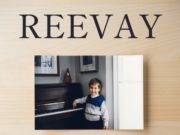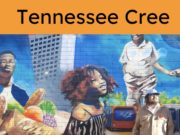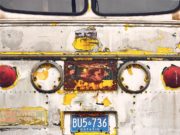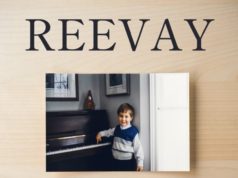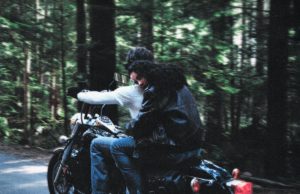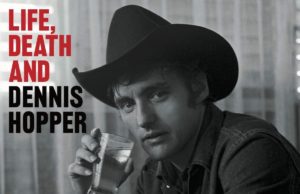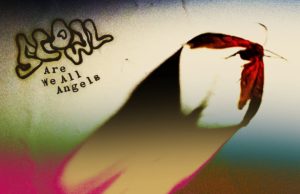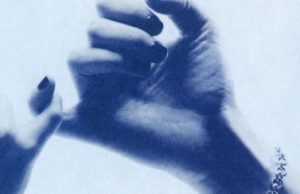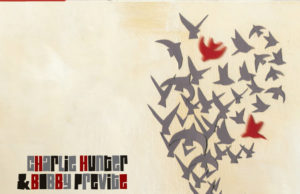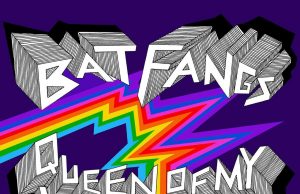 I have been reading Mike Nesmith’s memoir Infinite Tuesday. It’s brilliant — a fantastic mix of behind-the-curtain recollections and little insights. I came for the former, but found that I’m really enjoying the latter.
I have been reading Mike Nesmith’s memoir Infinite Tuesday. It’s brilliant — a fantastic mix of behind-the-curtain recollections and little insights. I came for the former, but found that I’m really enjoying the latter.
One of the earliest little insights in the book involves something Nesmith refers to as Booning. It comes up again and again. In fact, you could almost create a glossary of some of the Nesmisms in Infinite Tuesday. Along with Booning, there’s “CP,” which stands for celebrity psychosis. He also uses “riff” a lot, to indicate not only to a monologue, but also to an exchange of opinions, aka “riffing.”
Booning gets a capital B because it is named after singer Pat Boone. Nesmith tells a story about his musical awakening and his early fondness for Fats Domino’s Ain’t That A Shame (1955). He told a girl he was wooing at the time about the song, and she also claimed to love it. But when he played it for her, she seemed taken aback. The version she was familiar with — and loved — was the cover by Boone, recorded a month after Domino’s original was released. Hence Booning — the phenomenon of becoming fond and familiar with a cover of a popular song before being aware of its original version.
I thought I would go over some other interesting examples of Booning, leaving out examples where the original is particularly obscure — like The Arrows’ original version of I Love Rock ’n’ Roll, later popularized by Joan Jett & The Blackhearts. Here are some times it happened to me — and once when it didn’t:
Lucy In The Sky With Diamonds
One of my very first favourite songs falls into this category. I heard and adored Elton John’s reggae-tinged cover of The Beatles’ Lucy In The Sky With Diamonds long before I heard the original. In fact, I recall being disappointed with The Beatles’ version for a while. Hey, I was a kid, OK? Elton’s version is nearly twice as long, peppier, has a breakdown and replaces the signature organ part of the original with the same refrain played on guitar. The Beatles’ version has a tempo of 138 BPM in the verses and 188 in the chorus. Elton’s version is 166 BPM throughout.
Pinball Wizard
I was a huge Elton fan when I was a little kid. That’s behind these first two tracks — they were both on Greatest Hits Vol. II, which came into my life long before The Who‘s original, or even the rest of the Tommy film soundtrack, which is where the Elton version comes from. Both Elton and The Who issued the song as a single. The Who released it in March 1969 as a preview of their then-forthcoming rock opera Tommy. It came out just a month after it was recorded, and two months ahead of the album. It got to No. 6 in Canada, No. 19 in the U.S. and No. 4 in the U.K. Elton’s cover — which was first offered to Rod Stewart — got to No. 9 in the U.S., No. 1 in Canada, and No. 7 in the U.K. Although Elton replaced the Lucy organ with guitar, on Pinball Wizard, he replaces the signature acoustic guitar intro with piano. Elton’s version is two minutes longer, in a different key (F major rather than D major) and faster — with a tempo of 130 BPM compared to the original’s 124 BPM. But you can still sing the lyrics of Folsom Prison Blues overtop of either. Or vice versa.
Muskrat Love
There’s no way I can be alone on this one. In fact, I’m pretty sure I still have never heard the original version by songwriter Willis Alan Ramsey. It came out in 1972 on his debut — and sole — studio album. Like Domino’s Ain’t That A Shame, Ramsey’s original version of the eventually famous song, had a different title: Muskrat Candlelight. The version I became familiar with was the 1973 cover by America. Their label hated it, and it only cracked the Top 40 on adult contemporary lists. The Captain & Tennille had far more success with the song when they released it in 1976, topping the charts in Canada and going Top 5 in the U.S. I’m still far more familiar with the America version, thanks to my brother owning a copy of History: America’s Greatest Hits. The sickeningly saccharine love story of anthropomorphic muskrats Susie and Sam opens Side 2. There will never be another 1970s.
Calling Occupants Of Interplanetary Craft
This Canadian example is actually one where I didn’t get Booned. I was first familiar with the original by Toronto’s Klaatu, which opens their debut album 3:34 E.S.T., and was released as a single — but never even cracked the Top 40. I remember being surprised to learn Klaatu were Canadian, having been fooled by the faux English accent on the lead vocal. They clearly sing “crawft” instead of “craft.” The following year, Richard and Karen Carpenter assembled 160 musicians to, ahem, craft their cover, which remains a textbook example of Booning. Surely far more people are familiar with this version. It got to No. 18 in Canada, No. 1 in Ireland, No. 9 in the U.K. and No. 32 in the U.S.
Cum On Feel The Noize
I’m a huge fan of Slade now, but in 1983 I still had no idea who they were. However, 10-year-old me sure knew the band Quiet Riot. In fact, I was more than a little intimidated by them. Their cover of Slade’s 1973 single Cum On Feel The Noize was a huge hit during the hair-metal era. It got to No. 5 on the U.S. Billboard and No. 8 in Canada. It didn’t do so well in the U.K., where the Slade original topped the charts upon release. Quiet Riot’s version basically made the L.A. outfit into stars. They even tried a repeat with a cover of Slade’s Mama Weer All Crazee Now, with less success.
Smokin’ In The Boys Room
There’s no way Mötley Crüe weren’t trying to duplicate the success Quiet Riot had with their Slade cover. The Crüe grabbed another 1973 glam banger — Brownsville Station’s signature song Smokin’ In The Boys Room. The original got to No. 3 on both the U.S. Billboard and Canada’s RPM charts, and was included on a few of those K-Tel compilations in the 1970s. But I first remember hearing the song at a middle-school dance — and it was the Crüe version from 1985. Their cover was a hit, but not as big as the original. Good.
Spirit In The Sky
Similar story. Doctor & The Medics had a hit with this cover in 1986, thanks in part to the video featuring lead singer Clive Jackson (The Doctor) and his horn-shaped hair. It kind of looked like those Bugles corn snacks. The track also has a killer fuzz-guitar hook — prominent in both the original and the cover. The dirty, fractured guitar gives the song a sense of evil, while the lyrics are decidedly non-secular. The result is a compelling juxtaposition, which certainly was a big part of its appeal. Curiously, the original was written and performed by Norman Greenbaum, who was Jewish. Greenbaum’s original was an international hit, topping charts in Canada, the U.K., the U.S., Australia, Ireland and West Germany. But that was in 1970. In 1986, I was 13 years old, so the Doctor & the Medics version was the one that found me first. It was also an international hit, but not quite as big as the original — reaching No. 1 in Canada, the U.K., Ireland, and Austria — but only got to No. 69 in the States.
Blinded By The Light
For a while, classic rock radio played the shit out of the Manfred Mann’s Earth Band revamp of this early Bruce Springsteen cut. I was first familiar with the cover — proggy and rockin’ like something by Boston or Journey, but curiously wordy. If I had known anything about Springsteen at the time, this would have been a big clue to its author. Truthfully, I find both artists difficult to love. Both Manfred Mann and The Boss have a bunch of great songs, but easily twice as many which turn me right off. Not this one, though. One of my favourite Springsteen tracks, with absolutely brilliant lyrics — up there with classic Tom Waits.
Hey Joe
No doubt others have been Booned by the classic Jimi Hendrix Experience version of this Billy Roberts song. I realize Roberts’ 1962 original is a fairly obscure track, but I’m actually comparing it to the cover by Love from 1966 — a year before the Hendrix version. Jimi’s take was the first one I heard, by repeatedly borrowing a copy of Smash Hits from the library’s AV section. It wasn’t until years later that I heard the earlier version by Love, which is faster, far more staccato and ridgid. But it’s a track that has many Booning possibilities, as there were also hit covers by The Byrds, The Leaves, Tim Rose, Johnny Hallyday, Cher and Wilson Pickett. There are so many versions you could write a book about them — and Canadian music scribe Jason Schneider has. It’s called That Gun In Your Hand: The Strange Saga of ‘Hey Joe’ and Popular Music’s History of Violence and it comes out May 30.
We Will Become Silhouettes
This is probably the least-likely Booning on this list, because I was already a fan of Death Cab For Cutie when I first heard this song. But, it wasn’t the original version by the Ben Gibbard side-project The Postal Service that I heard — it was the cover by The Shins. The reason is simple enough: It was shown to me by a bandmate as a possible song for us to cover, and the arrangement by The Shins was the one best-suited for our band. Well, it didn’t take long for me to find the original, and for it to far eclipse the cover. It’s the only one which has a place in my own collection.
This Flight Tonight
I’ve already mentioned those K-Tel compilations of the ’70s. One of them I had as a kid — probably 22 Explosive Hits — had Nazareth’s awesome cover of Joni Mitchell’s This Flight Tonight on it. I was a huge fan and remain one. In fact, even though I know the Mitchell original is better, I’m torn over which version I prefer. So perhaps this makes this the greatest example of Booning on my list.
Other examples of songs that likely Booned people by making them fans of the cover before ever hearing the original:
• I Will Always Love You | By Dolly Parton, cover by Whitney Houston
• Lake Of Fire & Plateau | By Meat Puppets, covers by Nirvana
• The Man Who Sold The World | By David Bowie, cover by Nirvana
• I Think We’re Alone Now | By Tommy James, cover by Tiffany
• The Ballad of Peter Pumpkinhead | By XTC, cover by Crash Test Dummies
• Red Red Wine | By Neil Diamond, cover by UB40
• Twist And Shout | By The Top Notes, then The Isley Brothers, covered by The Beatles
• Woodstock | By Joni Mitchell, cover by Crosby, Stills, Nash & Young
• Mr. Tambourine Man | By Bob Dylan, cover by The Byrds
• Hurt | By Nine Inch Nails, cover by Johnny Cash
• • •
Area Resident is an Ottawa-based journalist, recording artist, music collector and re-seller. Hear (and buy) his music on Bandcamp, email him HERE, follow him on Instagram and check him out on Discogs.


